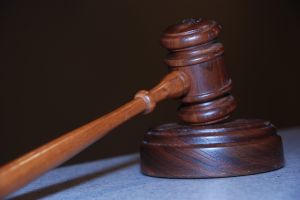 A snippy apology is apparently not what the judges involved in Apple’s U.K. patent litigation over Samsung tablets ordered, according to testy statements made at a U.K. Court of Appeal hearing today.
A snippy apology is apparently not what the judges involved in Apple’s U.K. patent litigation over Samsung tablets ordered, according to testy statements made at a U.K. Court of Appeal hearing today.
Judge Robin Jacob court told Apple and Samsung lawyers this morning that the iPad maker had 24 hours to revise its currently published statement about the verdict in favor of Samsung on Apple’s UK website, replace it with a new one apologizing for inaccuracies, put the link on its home page, and use at least an 11-point font.
The website notice that Apple published last Friday highlighted a lower court judge’s statement that the Samsung tablets involved in the lawsuit “are not as cool” as Apple’s iPad. Apple also piled on a host of earlier judicial platitudes emphasizing that the iPad has “extreme simplicity . . . is striking . . . . It is a cool design.”
The original July 18, 2012 order by Judge Colin Birss of the Patent Court, granted Samsung’s request to require Apple to publish a simple, one-paragraph statement on its website, and in a number of print publications:
“On 9th July 2012 the High Court of Justice of England and Wales ruled that Samsung Electronics (UK) Limited’s Galaxy Tablet computers, namely the Galaxy Tab 10.1, Tab 8.9 and Tab 7.7 do not infringe Apple’s registered design 000181607-0001. A copy of the full judgment of the High Court is available via the following link [insert hyperlink].”
Judge Birss ordered Apple to publish the notice only in the U.K., denying Samsung’s request that Apple publish it on each of the company’s country-specific European websites. He also rejected Samsung’s request that the notice be on Apple’s UK website for a year, concluding that six months was more appropriate. The judge’s rationale was that “this a very fast moving industry and I bear in mind the risk of prejudice to Apple” of a more extended publication requirement.
After being taken to task by the Appellate Court today, however, Apple’s legal team asked for two weeks to make changes to the page about the judgment on its website. That request was flatly rejected.
“I would like to see the head of Apple make an affidavit setting out the technical difficulties which means Apple can’t put this on,” Judge Jacob reportedly said. “I just can’t believe the instructions you’ve been given. This is Apple. They cannot put something on their website?”
Michael Beloff, a lawyer for Apple, unsuccessfully tried to convince the court that the publication requirement “is not designed to punish, it is not designed to makes us grovel…The only purpose is to dispel commercial uncertainty.”
In an opposition filing, Samsung’s lawyer, Henry Carr argued that Apple’s notice created the “impression that the U.K. court is out of step with other courts.” Apple’s unapproved notice posited that “[t]here is no injunction in respect of the registered design in force anywhere in Europe,” an apparent slap at U.K. rulings in the case.
Apple’s attempt at taking some editorial and creative license with the original publication notice should not come as a surprise. After all, the company’s late founder Steve Jobs once remarked, “it isn’t the consumer’s job to know what they want.” Was the same philosophy behind Apple’s interpretation of the lower court’s original publication order?
A party that appears to be trying to inject some creative marketing into a judge’s ruling assumes the risks for non-compliance. I doubt that Apple will try the same approach again.
